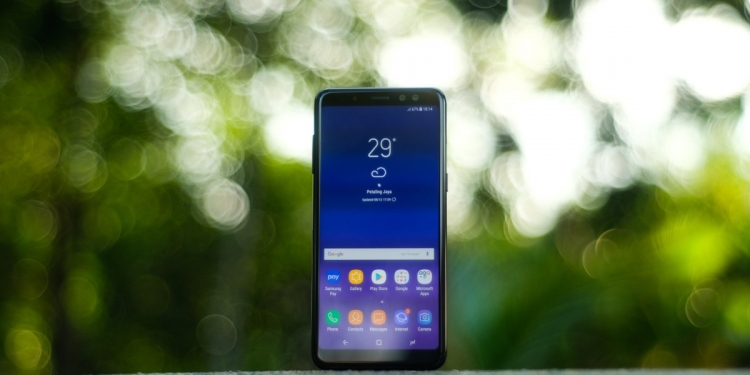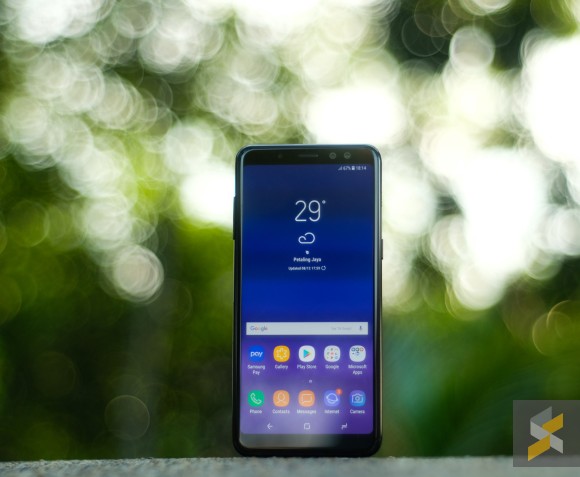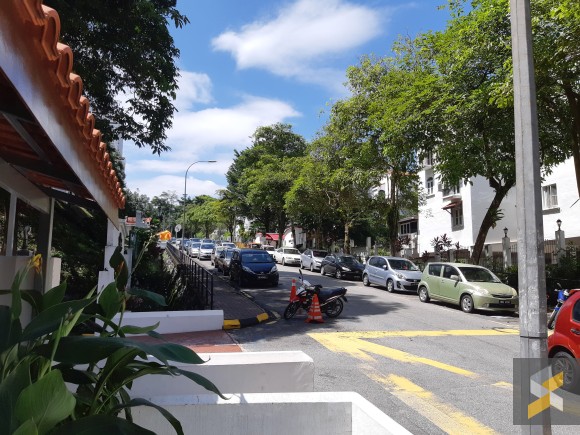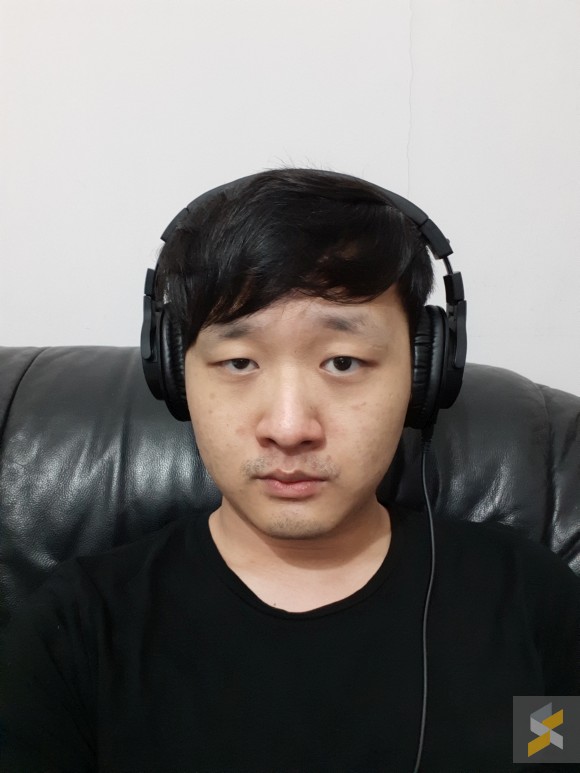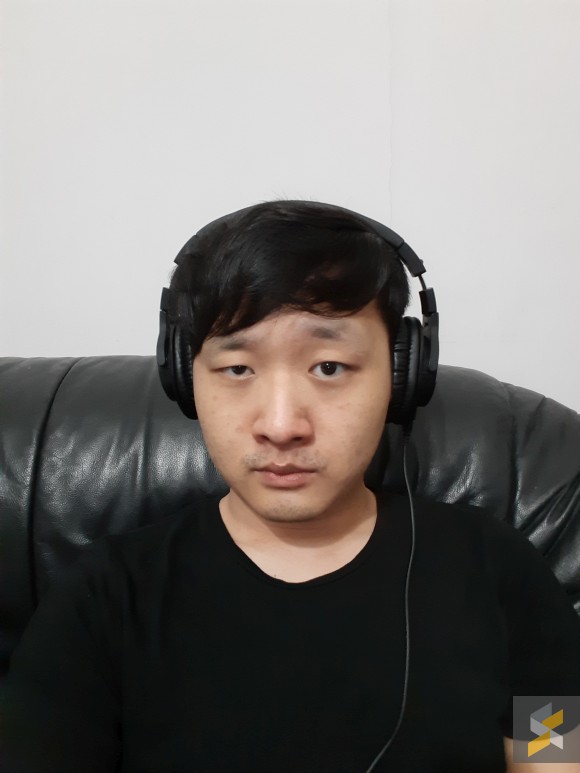Ask anyone who has some experience with searching for the best bang-for-buck smartphone and they’ll probably tell you to avoid big brands when you’re on a tight budget. Stick to something like Xiaomi, for example, and you’re bound to get something that’ll give you way more smartphone for your money.
But that doesn’t stop big brands like Samsung from making entry and mid-range smartphones. And the thing I noticed with something like Samsung’s brand new Galaxy A8 is that they’re getting dangerously good at doing this.
“What are Samsung Kool Aid have you been drinking Rory? How can Samsung’s mid-range phones ever have better specs than Xiaomi?” I hear you say, and I will admit that you have a fair point. When you’re buying big-brand smartphones, you’re not just paying for the phone, you’re paying for the brand, the prestige, and the support structure that gave birth to this handset in the first place. Apple, for example, is a good case in point.
However, there’s also one thing spec-sheet warriors tend to forget when evaluating the value of these big-brand smartphones, something I’ve also been guilty of in the past. When you buy from someone like Samsung, you’re not just buying the phone, you’re also buying into their ecosystem and all the little advantages of having a massive range of smartphones bring.
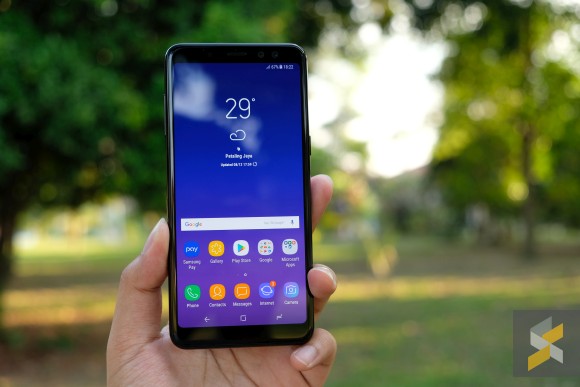
The phone I have here, and that I’ve been using for a short while as a secondary device, is a child of the massive chaebol that is Samsung. It’s not their first mid-range handset to bear the Galaxy A name and I doubt it’ll be their last. In the hierarchy of Samsung Mobile’s handsets the Galaxy A sits just above the entry-level Galaxy J and just below the flagship Galaxy S series. And you can really tell that they tried really hard to keep right where it is, which has both its pros and cons.
A pro, for starters, is how phenomenally built this smartphone is. It sheds the “cheap” feeling of the Galaxy J and replaces that with a truly stunning glass and metal sandwich that’s sturdy and machined really well. Not quite to the level of precision as the Galaxy S — the edges are just a little bit rougher — but very impressive nonetheless.
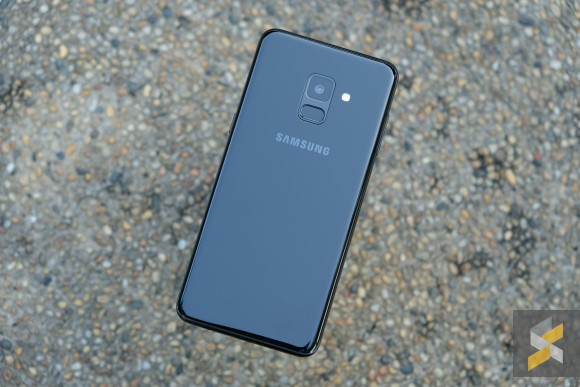
Sure, past versions of the Galaxy A have had really good builds too, but this is by far the best to my hands. Samsung polished the metal band around the handset to a shine so that it matches this year’s flagships, making it feel a lot like a mini S8. What’s more, the body isn’t just for show, it’s also IP68 dust and water resistant, something that’s still not as ubiquitous as I’m sure we’d like even on today’s flagship handsets.
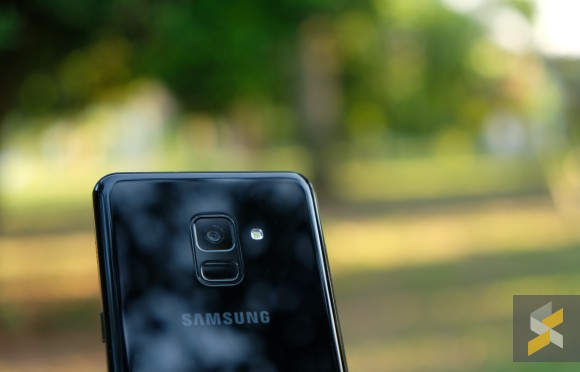
Being so similar to the Galaxy S, I was initially concerned about whether they were going to put the fingerprint scanner in the same dumb spot as the Galaxy S8/S8+ and Note8, but I’m happy to report that it is in a far more sensible spot now. It’s easier to reach and harder to mistake for your camera lens. Samsung also included “Face unlock” which is quick, but I don’t trust it anywhere near as much as a fingerprint scanner.
I think this is also the most “new” Galaxy A smartphone yet. In contrast to 2016 and 2017’s “facelift”, the Galaxy A8 — along with its new name which I suspect is to bring it in line with the Galaxy S line — is as much of a breath of fresh air as the Galaxy S8 was. Gone are the thick forehead and chin, and sandwiched inside the slim(ish) bezels you’ll find a gorgeous 18.5:9 aspect ratio 5.6″ FHD+ Super AMOLED display.
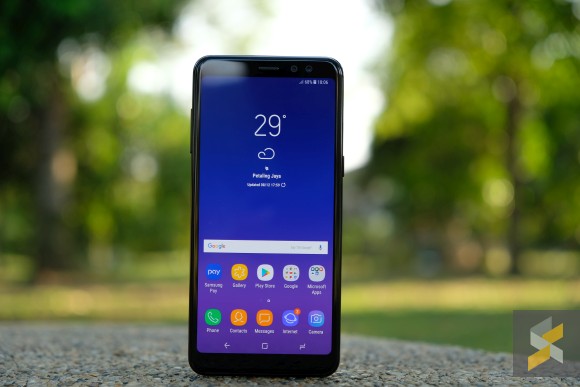
Despite the fear surrounding AMOLED screens *coughV30andPixel2XLcough* Samsung’s displays continue to impress. It’s got great viewing angles, gets super bright and has that classic vibrant Samsung look.
While the panel looks good, I really think the bezels could have been a little smaller. Instead, you’re left with a relatively fat band around the smartphone’s screen which isn’t very attractive. Sure, Samsung might also call this an “Infinity Display” but it’s not curved so it doesn’t bleed over the edge like Samsung’s flagship models.
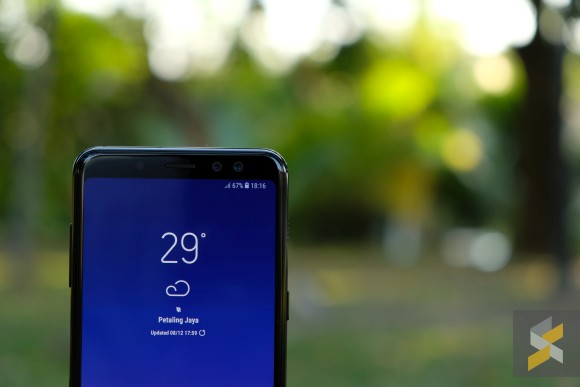
You do get an Always-on Display with the A8 that’s pretty much identical with the S8 and Note8, right down to the virtual home button. Oddly, that area of the screen isn’t pressure sensitive like its flagship relatives so you can’t press down on it to wake the screen. You’ll have to double tap it which isn’t nearly as intuitive.
Performance is also pretty solid. The Galaxy A8 doesn’t have a super crazy spec-sheet. It’s powered by an octa-core Exynos 7885 processor mated to 4GB of RAM and 32GB of internal storage. So far, it has been able to handle conventional smartphone tasks pretty well but I’ll get back to you on well it holds up as more stuff fills my phone in the full review.
Other spec-sheet highlights include a 3,000 mAh battery and dual-SIM support. There’s also fast-charging via a USB Type-C port which is always a great addition.
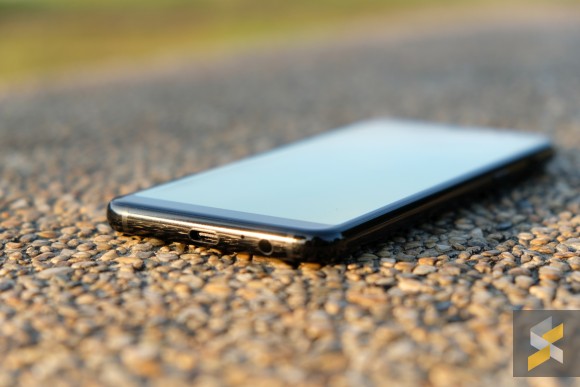
But the Galaxy A8 isn’t just about what it borrows from high-end flagships, it’s also about what it keeps from the rest of the world which can be both good and bad.
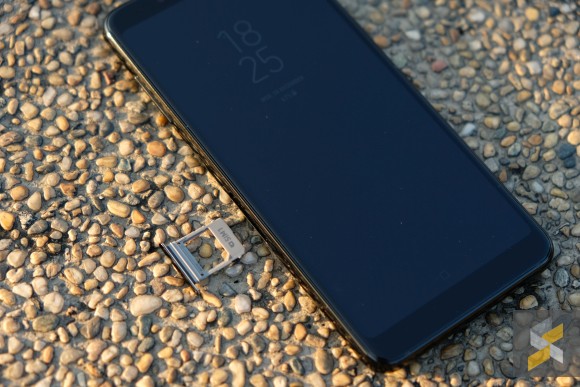
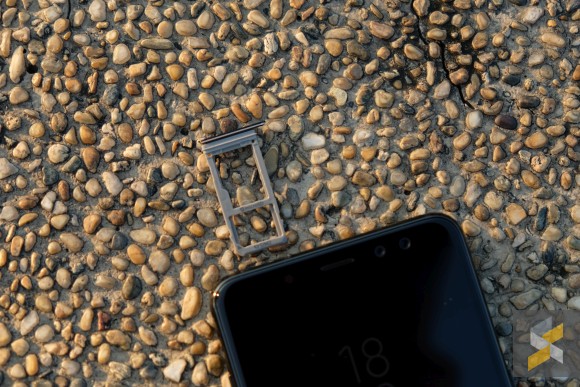
Great things they kept, for example, is the 3.5mm headphone jack and a dedicated microSD card which are slowly disappearing from many smartphones. There’s also Samsung Pay which is an excellent mobile payment service and something you can only find on Samsung devices.
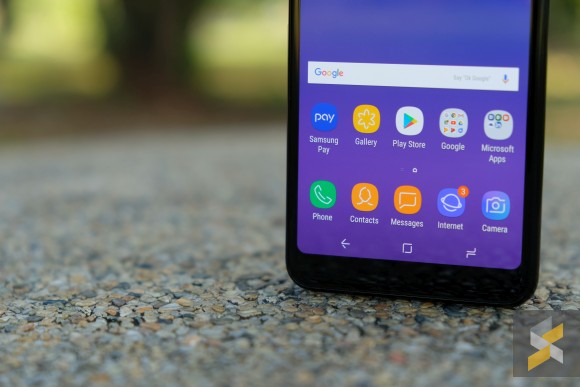
It also comes running Samsung’s software which I think has come a long way since the early days of TouchWiz. I thought it was excellent on the Galaxy S8 and that much holds true on the Galaxy A8. Sure, you’ll have staunch TouchWiz haters but if you’ve given the new software a try, you’ll know that it’s nowhere near as rubbish as it was. It’s actually great now.
However, you’ve also got the bad stuff that Samsung couldn’t shake. The Galaxy A8 I have here is running on Android 7.1.1 Nougat, for example, which means it’s already running dated software. Then there’s the weird placement of the single mono speaker.
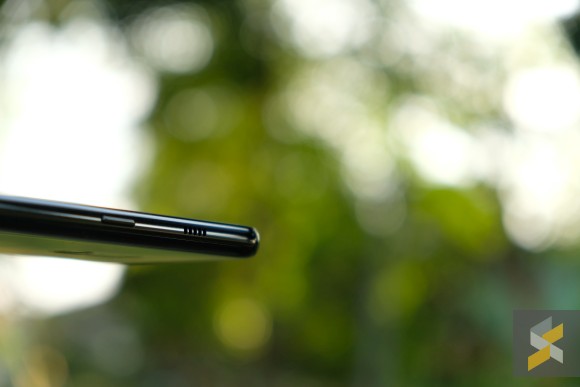
It gets pretty loud but not as loud — or as satisfying — as a pair of stereo speakers and its placement makes it hard to cup with your hand for when the speaker isn’t loud enough. I remember this being a very entry-level smartphone “feature” so I’m disappointed that it still haunts a device that feels this good.
Finally though, we get to the most iffy part about the Galaxy A8. A part that, ironically, Samsung pushes the hardest: Its camera.
[nextpage title=”Yep, the camera”]
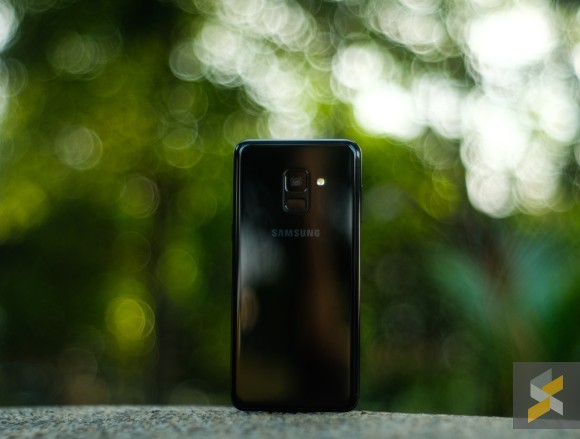
Samsung’s Galaxy A8 has a great camera…on paper. The rear camera is a 16MP shooter with a super fast f/1.7 aperture lens and phase detection auto-focusing. In front, this guy’s got a dual camera setup with a fixed focus f/1.9 aperture 16MP main selfie shooter and a secondary 8MP f/1.9 aperture slightly wider secondary selfie camera.
Sounds good, right? Yeah, well sort of. But, the resulting images leave a lot to be desired.
If you’re taking pictures in the most perfect of days, you can get some nice photos. But, if you really look at it you’ll notice the exposure is a little off, the highlights are clipped, dynamic range isn’t super great, and if you zoom in, the details look a little unnatural.
Still, if you’re uploading to Instagram, this photo is good enough so I won’t give it such a hard time here.
Take things to a scenario that’s less than well-lit, though, and you’re left with a big pile of disappointment. You can tell that the phone really had to crank down the shutter speed to compensate for the lack of light in this photo because motion isn’t frozen properly — and this isn’t even some super dark scene.
Perhaps the worst thing about this camera in less-than-ideal lighting was the fact that focusing was pretty atrocious. Slow and inaccurate would be words I’d use to describe. My colleague took multiple shots of this angle but this was the only one in focus. Also note the bad dynamic range.
I don’t know if it’s the sensor’s problem (pixels too small), but I’m pretty sure the lack of optical image stabilisation (OIS) was a contributing factor too. As far as first impressions go, consider me unimpressed with the caveat that I will take more photos with it and report my findings in the full review.
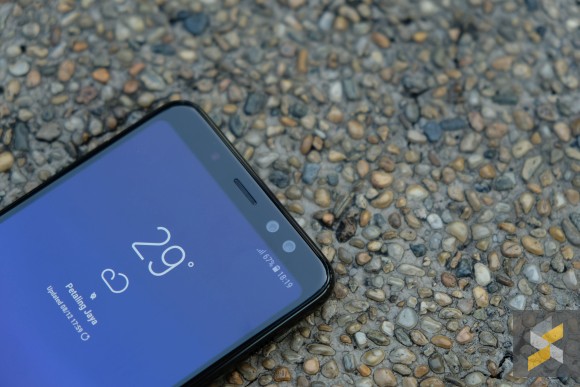
Moving on to the front camera, it’s another case of “photos look OK but not amazing”. Maybe it’s designed to make your skin look fair (they’ve also got a bunch of beautification features) but I didn’t really like the way the skin tone was rendered.
One of the features Samsung highlighted in their blurb was the dual camera. It enables one of two things and the first is perhaps the most pointless one of them all — the secondary camera is ever so slightly wider.
Normal
Wide
Like, might-as-well-don’t-bother kind of wider.
The second thing it enables though, is Live Focus for selfies. Yep, Live Focus, as in Samsung’s version of portrait mode. As we found out in our camera comparison, Live Focus isn’t super great and the same seems to be true about Live Focus for selfies too.
I mean, you can get a neat little background blur but since selfies are usually closely cropped, there really isn’t much background to blur anyway.
Live focus is pretty bad for group selfies and photobombs though.
Conclusion
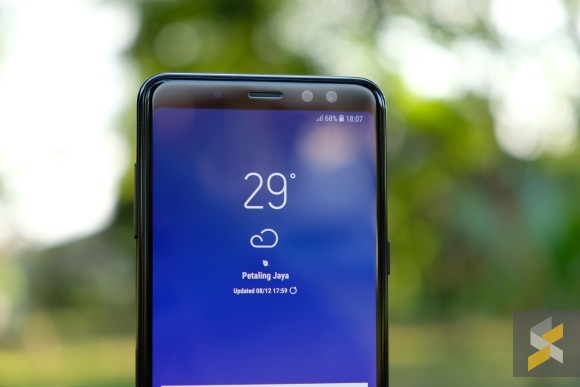
I guess this brings us back to the main theme I set earlier in this article: Big brands are getting really good at making mid-range value-for-money smartphones.
If you look at the Galaxy A8 as a whole, I think it gets a lot of things right for a smartphone. It’s phenomenally built, it looks really good despite the slightly fat bezels, and it features stuff that only a big brand like Samsung can bring to the mid-range like IP68 water and dust resistance and awesome ecosystem perks like Samsung Pay and Gear VR. It’s almost like a smaller S8 but without the curves.
You can even pick a bigger version of the same smartphone — the Galaxy A8+ — that comes with a bigger 6″ display, 6GB of RAM, 64GB of storage and a 3,500 mAh battery.
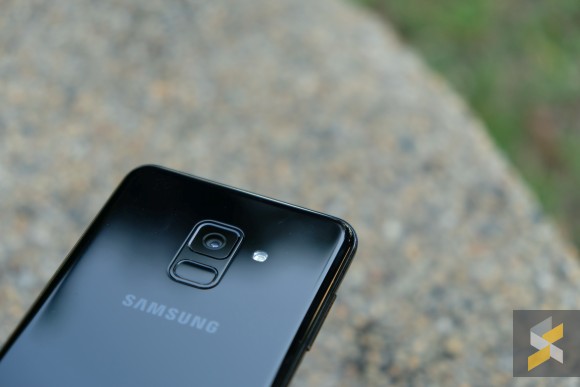
But there are also big uncertainties with the A8 too. I can’t, for example, tell you how well performance will hold up when I get all my apps in and use it for an extended period of time, despite how well it’s performing now. I also can’t conclusively tell you how good the camera is, though first impressions aren’t convincing.
What I can tell you is that when I think of all high mid-range handsets — besides the few notable exceptions — I can’t say that they all far outperform the Galaxy A8 in every respect.
Right now, I think it will all come down to price. If the A8 and A8+ keep it below RM2,000, it could be worth considering. Anything more and you’re probably better off with a discounted 2017 flagship.
Still, I will save final judgement for when I get all the pieces the puzzle lined up in my full review. Until then, take the uncertainties with a grain of salt. Also, let me know what you think of the Galaxy A8 in the comments below!

